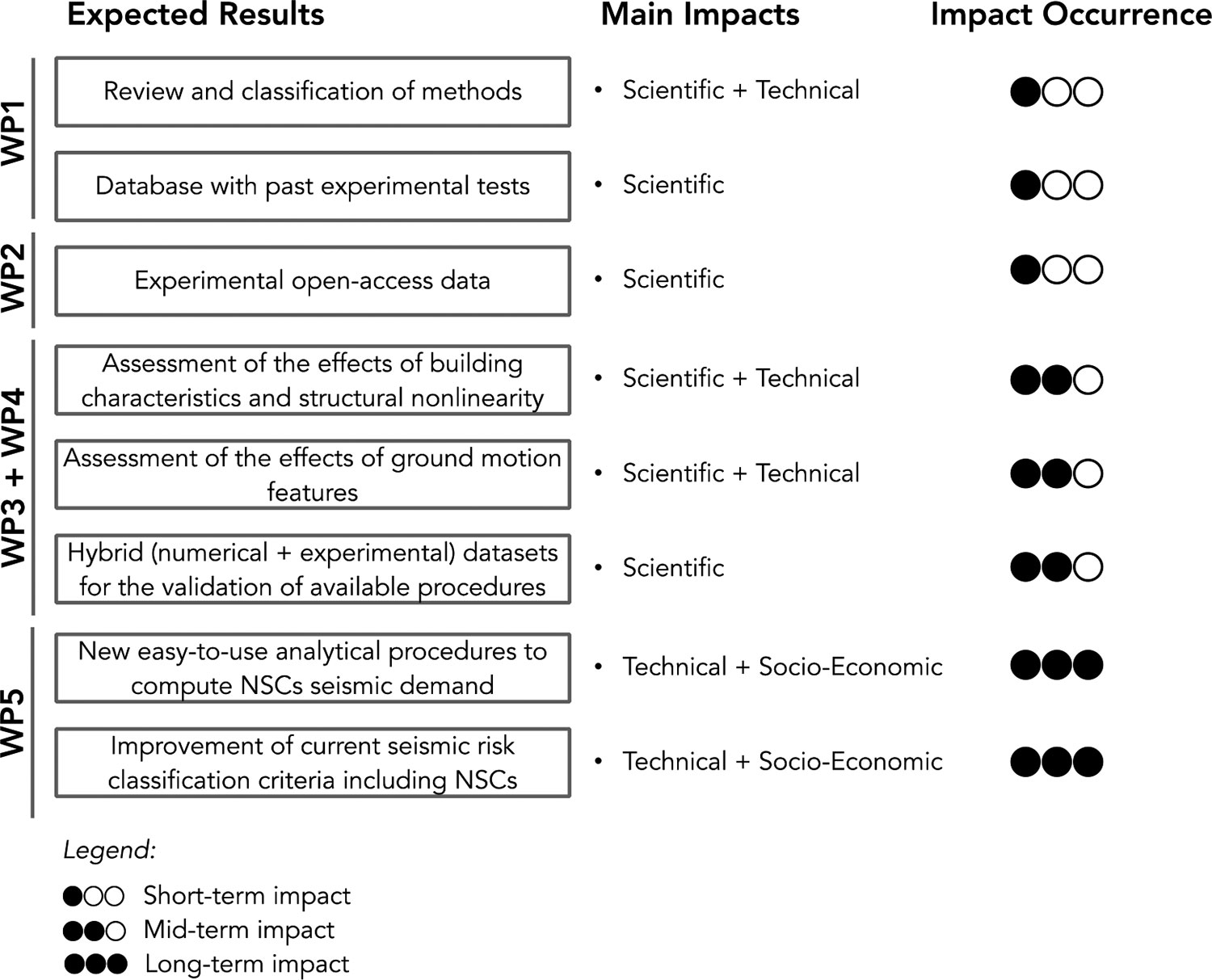NEWTON (NEW TOols to compute the seismic demand on Non-structural components) is a projectfunded by the Italian Ministry of University and Research within the 2022 PRIN (Progetti di Rilevante Interesse Nazionale). The project will analyzethe amplified seismic input on acceleration-sensitive nonstructural components (NSCs). NSCs are not part of the structural load-resisting system but are relevant for building functionality, such as partition walls or parapets in ordinary buildings or artistic pieces in monumental ones.
The NEWTON objective is threefold: to advance scientific understanding of the seismic amplification phenomenon; to provide a comprehensive validation of the methodological tools at present available for the definition of the filter seismic input on NSCs; and to propose new practice-oriented tools that could be easily implemented in seismic codes and guidelines for practitioners.
To pursue these aims, a shake-table campaign on scaled prototypes of two ordinary building typologies will be designed and executed. The two specimens will be representative of reinforced concrete (R.C.) and unreinforced masonry (URM) structuralunits, respectively. They were selected being a typology with common characteristics and widespread in the residential building stock.The test set-up and the specimens will be designed ad-hoc to collect data and develop models allowing:
- To identify parameters mostly affecting NSCs seismic demand
- To quantify the effects on FS due to the main building features, e.g. in terms of lateral LRS, dynamic properties, the contribution of higher modes, increasing structural nonlinearity, the influence of infill panels (for the R.C. specimen), and of diaphragms with finite stiffness (for the URM one), distribution of infill panels (for the R.C. specimen) and of openings (for the URM one)
- To investigate the effects on FS due to the ground motion characteristics, in terms of amplitude, frequency content, and duration
- To define potentialities and limitations of the analytical expressions and tools at present available in literature and codes for the FS definition
- To propose enhanced tools for the computation of the filtered input induced to NSCs.
The NEWTON methodology combines theoretical and numerical approaches, validated with the use of the experimental data collected through the shake-table campaign.The expected results are:
- Overview and classification of methods for the computation of the seismic demands on NSCs.
- Definition of a database of experimental tests performed in the last decade.
- Experimental open-access data correlating structural data and ground motion features with filtered seismic demand on NSCs.
- Assessment of the effects of building characteristics and structural nonlinearity.
- Definition of hybrid (experimental plus numerical) datasets for the validation of availableproceduresto assess FS for both R.C. and URM buildings.
- Proposal of reliable and easy-to-use analytical procedures to compute the seismic demands on NSCs.
- Proposal of improvement of current seismic risk classification criteria for existing buildings including the influence of NSCs.
All the results are expected to have short-term scientific impacts (on the advancement of knowledge), mid-term technical impacts (for the implementation of practical tools in seismic codes), and long-term socio-economic impacts (since NSCs significantly affect building performance and occupant’s safety), as sketched in the figure.


